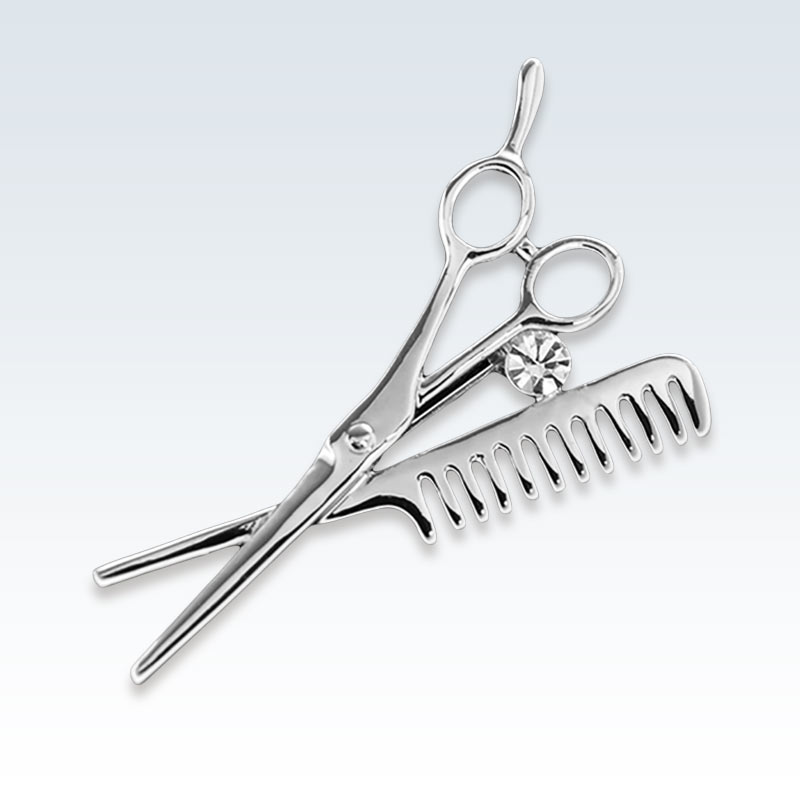More than a million people are licensed as cosmetologists in the United States and several million work as hairdressers.
Begin A Career With Less Debt
Should you become a cosmetologist or a barber? You might view cosmetology as a field of study one pursues during night school. Across the United States, schools charge an average of $17,000 for a certificate. It can cost more than $20,000. Iowa is the strictest, requiring 2,100 hours of instruction.
Graduates sometimes begin offering hair and facial treatments from their homes until acquiring enough clientele to rent out a booth. Many obtain minimum-wage jobs to pay off student loans. With much hard work, graduates may dream of eventually owning their shop and perhaps renting out booth space to others. All of this may not materialize but something is certain: It is a rigorous field of study that is popular.
What is a Cosmetologist?

The word cosmetology comes from a Greek word that means “beautifying.” Is your definition limited to personal experience, positive or otherwise? Skills within the field are quite broad. Cosmetologists receive training and are licensed to perform cosmetic treatments to hair, skin, and nails.
Areas of cosmetology specialization include skin care, cosmetics, manicures/pedicures, hairstyling, hair removals such as waxing and sugaring, electrolysis or intense pulsed light. Hairstyling includes cutting, coloring, extensions, braiding, perms, or eyebrow shaping. So anyone with hair, skin, or nails is a potential customer!
Many chemicals in salon products pose potential health risks. The “toxic trio” is often part of the ingredient list in nail polish, hair dyes, and nail polish removers (formaldehyde, toluene, and dibutyl phthalate). Allergies and dermatitis have forced nearly 20 percent of hairdressers to end their profession. Learning how chemicals interact determine which services can safely be offered within one salon.
Dermatologists are doctors with much more extensive training than cosmetologists. Whether dermatologists or cosmetologists, ClinicalPosters customers who log in with either a dermatology or cosmetology preference have immediate access to all things relating to hair, skin and nails. There are some lapel pins and charms more suited to hairstylists than dermatology.
How Barbers Differ From Hairstylists
You can become a licensed barber in as little as 6 months. Barber schools provide a comprehensive education in men’s hair care and grooming. Hands-on coursework includes hair cutting, shaving, straight razor techniques, honing and stropping, shampooing, scalp massage, permanent treatments, hair coloring, mustache, and beard design.
Barbershop tuition can range from $2,000 to $16,000 depending on the school—capping out where cosmetology tuition begins. In addition to the technical aspects of the job, barber schools provide students with an education in professional ethics, sterilization and sanitation, common skin disorders, business management, and interpersonal skills.
Licensing requirements vary from state to state but generally require the successful completion of a written exam and perhaps sometimes a demonstration of skill. With much less training, a barber can earn the same, if not more, than the average hairstylist.
To support the writing of useful articles about cosmetology, ClinicalPosters sells human anatomy charts, scientific posters, and other products online. You may sponsor specific articles, become a ClinicalNovellas Member, or remit a small donation.
ClinicalPosters sells human anatomy charts, scientific posters, and other products online to offset expense of the writing useful articles about cosmetology. Slide extra posters into DeuPair Frames without removing from the wall.
Show your support by donating, shopping for ClinicalPins, becoming a ClinicalNovellas Member, or leaving an encouraging comment to keep the research going.
To support the writing of useful articles about cosmetology, ClinicalPosters sells human anatomy charts, scientific posters, and other products online. You may sponsor specific articles or remit a small donation.
ClinicalPosters sells human anatomy charts, scientific posters, and other products online to offset expense of the writing useful articles about cosmetology. Slide extra posters into DeuPair Frames without removing from the wall.
ClinicalPosters sells human anatomy charts, scientific posters, and other products online. You may remit a small donation or become a ClinicalNovellas Member.
You can support the writing of useful articles about cosmetology by sponsoring specific articles, becoming a ClinicalNovellas Member, or remitting a small donation. Visible content is optimized for device size.







 Romance & Health Intertwine. Fall in love with a captivating romance miniseries that explores the essence of well-being. Become a ClinicalNovellas member for heartwarming tales.
Romance & Health Intertwine. Fall in love with a captivating romance miniseries that explores the essence of well-being. Become a ClinicalNovellas member for heartwarming tales.





